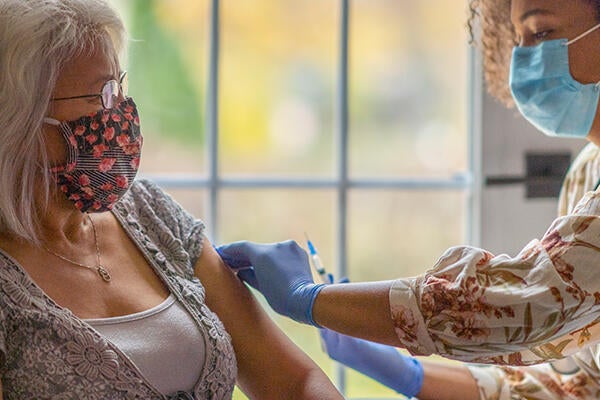
Businesses and entrepreneurs are changing the game for digital health
Experts call for health-care organizations to innovate in order to thrive in the new digital health era at the Waterloo Innovation Summit

Experts call for health-care organizations to innovate in order to thrive in the new digital health era at the Waterloo Innovation Summit
By University RelationsTo Dr. Louise Schaper, Amazon’s plan to start selling health-care services is a gamechanger.
“If you can afford to pay for it great, but what happens to people who can’t pay for private health care?” she asked.
At Waterloo’s latest Innovation Summit on the future of health innovation, Dr. Schaper’s keynote address emphasized the need to embrace creative and collaborative approaches to make health-care services available to everyone.
“In order for us to invent a health-care system that is truly patient centered, truly innovative, one that delivers a higher quality of care … every single health-care organization is going to have to rewrite their business plan,” said Dr. Schaper, CEO of Australasian Institute of Digital Health.
As the “fourth wave” of digital health continues, society needs to think beyond new technology and seek non-traditional routes between industry and business, alongside shaping government policy that is “pro-innovation, but also pro-patient.”
She noted that hosting a “training day” for a new electronic medical records software program for workers isn’t integration, but rather health-care professionals need to be part of the process from the very beginning, with an emphasis on upskilling the workforce whether it comes to front-line care or the back-end jobs supporting the delivery of care.
The pandemic has fueled innovation across businesses and industries. It’s placed unparalleled demands on modern health-care systems, with hybrid models being widely adopted to respond to the crisis. In response, society is seeing businesses, investors, government and health-care providers collaborate in new ways, at an exponential pace. According to industry leaders, these efforts need to keep going.
“During the pandemic, we found this huge rush of funding, focus and interest on one particular topic,” said Jun Axup, chief science officer and partner at IndieBio and a one of three panelists at the Summit. “Both public and private funding, public engagement became the focus bridge to figuring out problems we need to solve. The hope is that this translates to a focus on what’s broken and how the problems can be solved.”
Brian Lewis, president and CEO for Medtech Canada, added the Canadian health-care system budgets are not set-up to fund innovation.
“What needs to happen, is funds need to be put forward and we need to reconfigure the provincial health-care system to look at downstream value of new innovation,” said Lewis. “The system needs to evolve.”
While there’s still more work to do, the collaborative efforts across many industries are paying off, even if it means travelling into unfamiliar territory in usually risk-adverse environments.
“I think one thing we saw during this pandemic was all of a sudden we had a problem that everyone had to pull around and with really unique conversations happening — people from tech talking to people from health care, talking to patients, talking to clinicians, trying to innovate policy and trying to get change because that problem was so big,” said Catherine Burns, executive director, Health Initiatives and Sponsored Research at the University of Waterloo. “I’d like to see that collaboration continue.”
Recognizing the new Innovation Arena, located in the City of Kitchener’s Innovation District, Feridun Hamdullahpur, president and vice-chancellor, highlighted how the space will amplify Waterloo region’s health innovation sector and be a hub for connection and collaboration.
“Drawing on our strengths in health research, enabling connections between research and industry, and fostering student-driven solutions and entrepreneurship, we are uniquely positioned to lead in this exciting space,” said Hamdullahpur.
With Velocity, Waterloo’s flagship entrepreneurship program at its core, the Innovation Arena will streamline commercialization pathways for businesses, fast-track delivery of health technologies and drive Canada’s next wave of economic growth.
Collaboration, investment, upskilling our workforce — and even taking risks —are the ingredients required to transform and improve patient care.

Read more
Expanded Health Sciences Campus to bolster regional economy and profile

Read more
What have we learned, and what do we still need to learn?

Read more
This Waterloo grad is working to ensure the world has a safe and sustainable supply of blood
The University of Waterloo acknowledges that much of our work takes place on the traditional territory of the Neutral, Anishinaabeg, and Haudenosaunee peoples. Our main campus is situated on the Haldimand Tract, the land granted to the Six Nations that includes six miles on each side of the Grand River. Our active work toward reconciliation takes place across our campuses through research, learning, teaching, and community building, and is co-ordinated within the Office of Indigenous Relations.